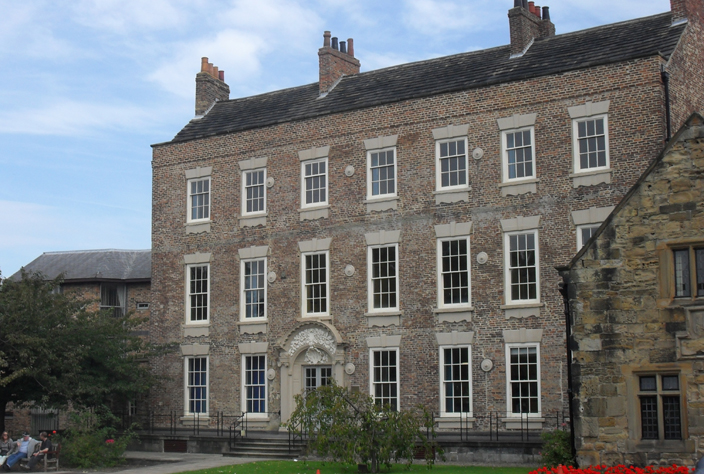This building dates from the early 18th century, and was originally an Archdeacon’s Inn. It was converted into University accommodation in the 1830s, at which point it was named Cosin’s Hall.
Who was Cosin?
John Cosin was a 17th century Bishop of Durham, who built and refurbished several buildings on and around Palace Green. (He was responsible for the construction of the adjacent almshouses, the grammar school and library across Palace Green, as well as extensive refurbishment of the Cathedral and Castle). Ironically, he did not build the Hall – it was simply named in his honour.

General View of Cosin's Hall, a typical Georgian building, characterised by a simple massive facade, and rows of rectangular windows.
The Style of the Building
The building’s simple, regular façade is typical of Georgian period architecture (1700-1800), of which this is an early example. It also marks the beginning of a period of constructing imposing buildings in brick in Durham – all of the earlier buildings around Palace Green were built of stone.
The Building today
Although the building’s façade is well preserved (a doorway has been blocked up at the southern corner of the building – but this is hardly noticeable), few of its original interior details have been preserved.
Today it is the home of Durham University’s Institute of Advanced Study, (IAS) established in 2006. IAS is an ideas-based institute which brings together some of the world’s finest researchers from every discipline to examine themes of major intellectual, scientific, political and practical significance.

